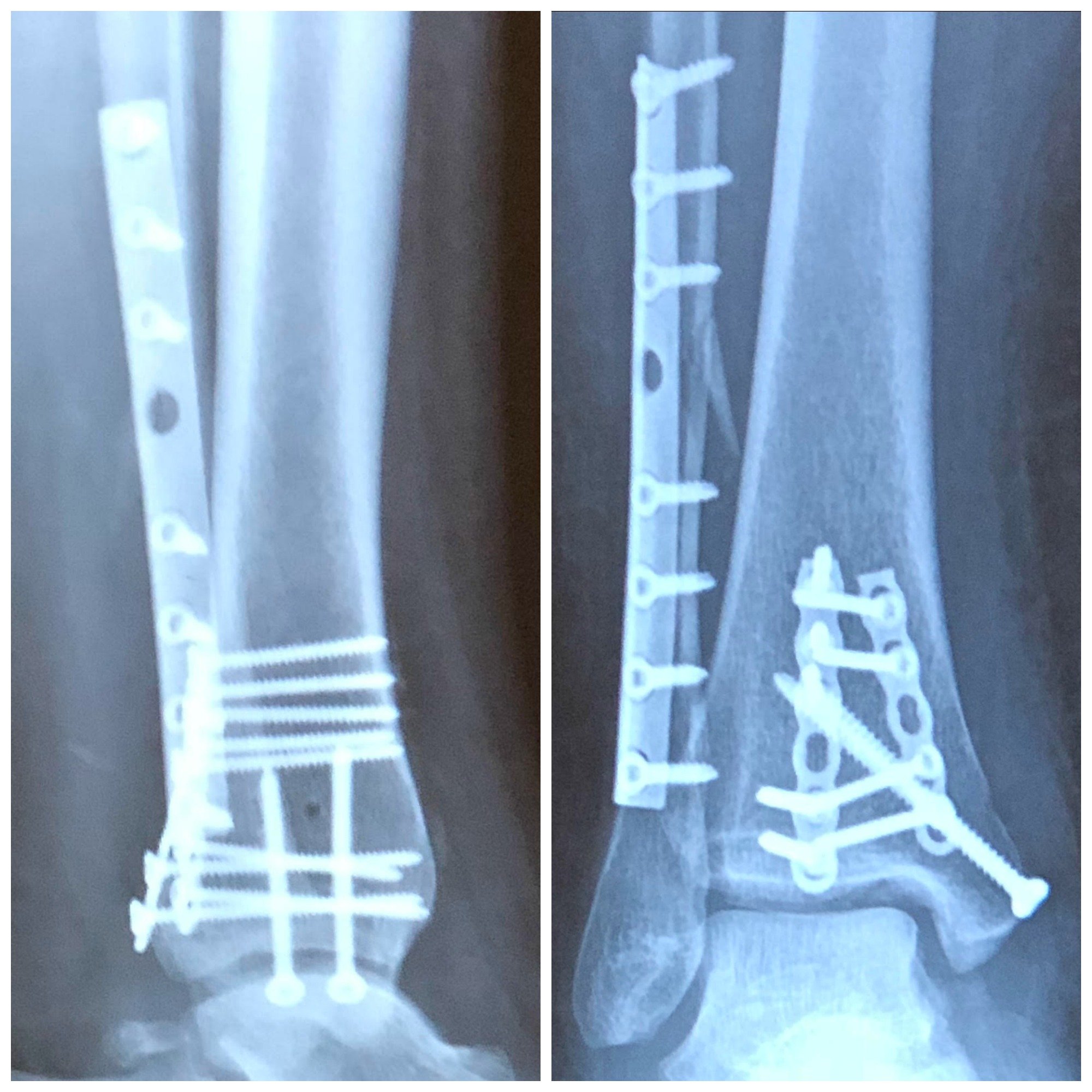

Lateral Malleolus Fracture TreatmentĪ lateral malleolus fracture is a fracture of the fibula bone. In some cases, the surgeon orders a computed tomography (CAT scan) or magnetic resonance imaging (MRI) for further evaluation. Depending upon the type of fracture the surgeon finds, he may order a “stress x-ray” for further evaluation. Diagnosisīecause it is difficult to tell a sprain from a fracture, our orthopedic specialists recommend an evaluation by x-ray. For severe ankle fractures, the bone may protrude through the skin. Common complaints include immediate, severe pain, bruising, tenderness to the touch, swelling, inability to bear weight, and a deformity of the ankle. Symptoms of a Broken AnkleĪ severe ankle sprain feels the same as a broken ankle. Many refer to this type of injury as a “rolled” ankle. They come about when there is twisting or rotating of the ankle during a fall or impact of a car accident. Cause of Broken Anklesīroken ankles occur in all age groups. The syndesmosis is the joint between the fibula and tibia, which connects together with ligaments. The lateral malleolus is the end of the fibula. The posterior malleolus is the back portion of the tibia. The medial malleolus is the inner portion of the tibia. The ankle consists of three bones that come together: the tibia (shin bone), the fibula (small lower leg bone), and the talus (a foot bone). The types of ankle fractures and injury we cover include lateral malleolus fracture, medial malleolus fracture, posterior malleolus fracture, bimalleolar fracture, and trimalleolar fracture. It is typical for the ankle ligaments to be damaged with an ankle injury. These types of fractures occur when one or more of the ankle joint bones separate into pieces. An ankle fracture is also known as a broken ankle. Ankle Fractures Causes, Symptoms, and TreatmentĪnkle injuries are among the most common of the bone injuries.


 0 kommentar(er)
0 kommentar(er)
